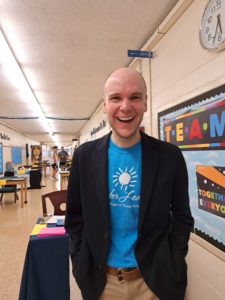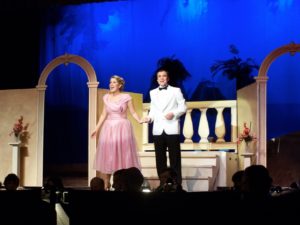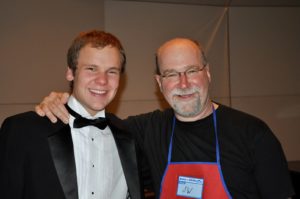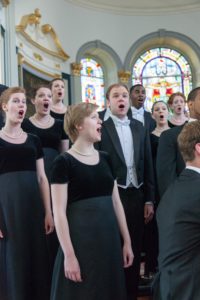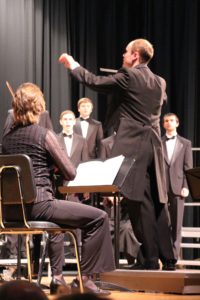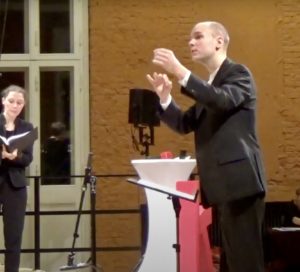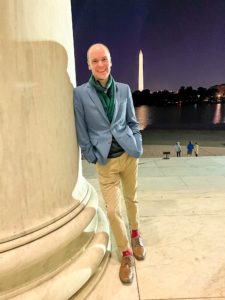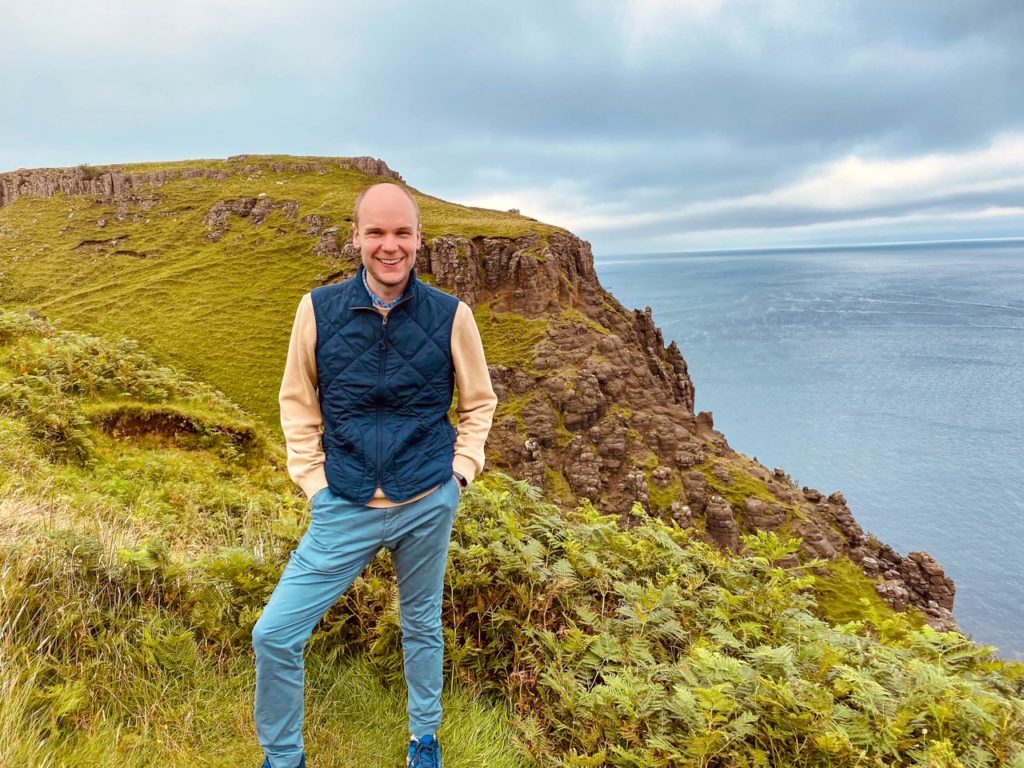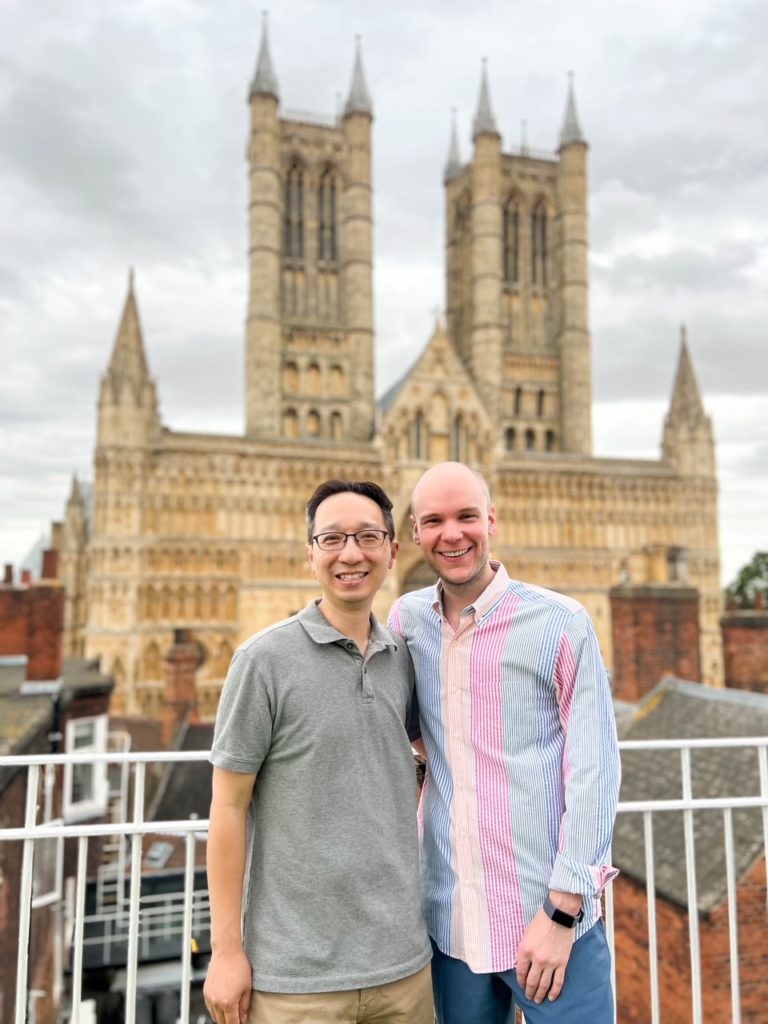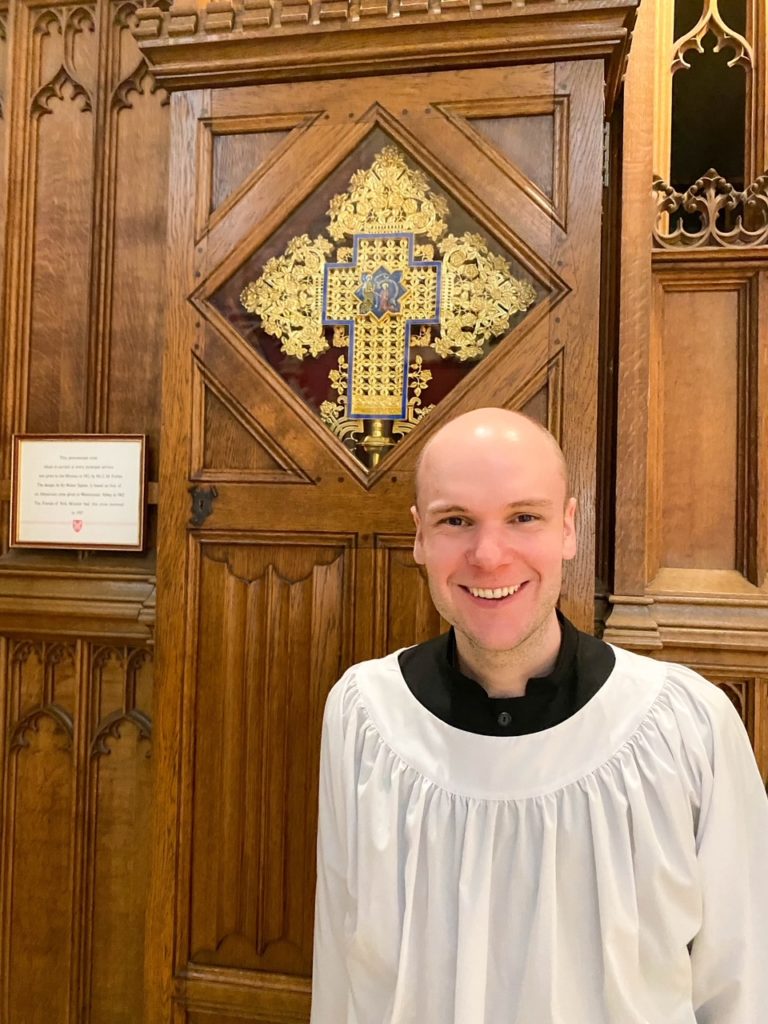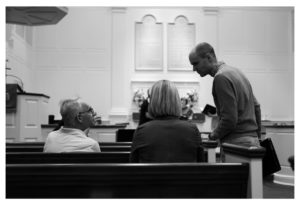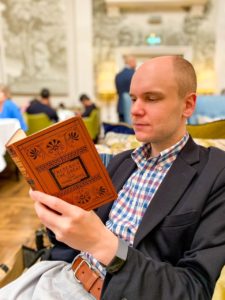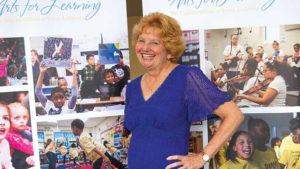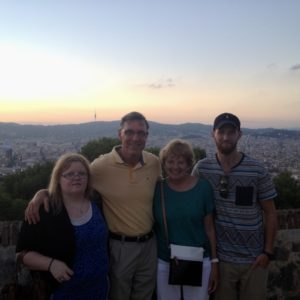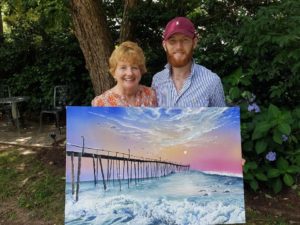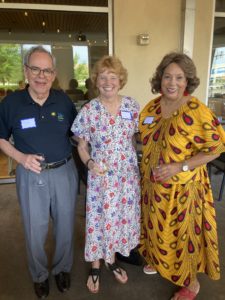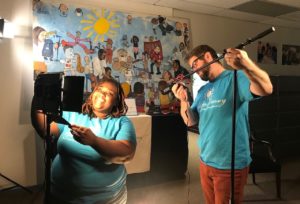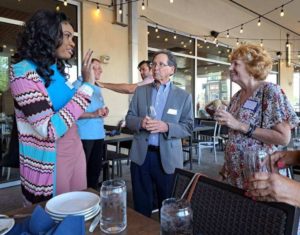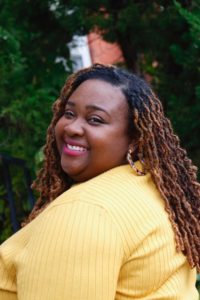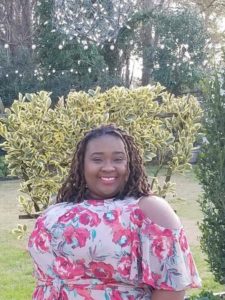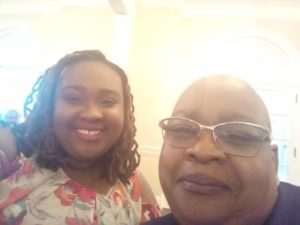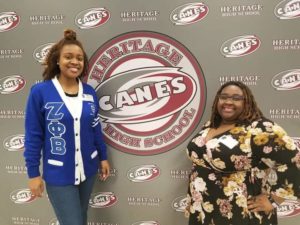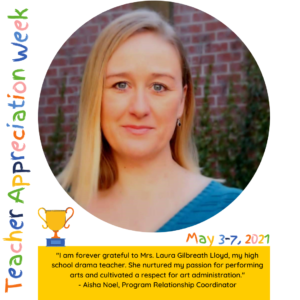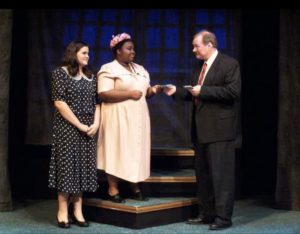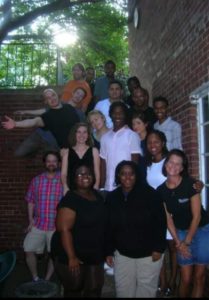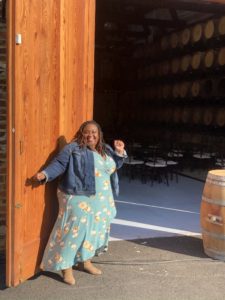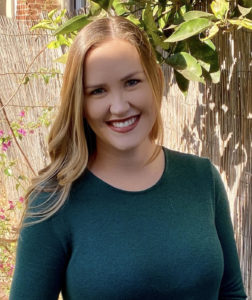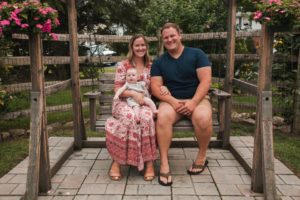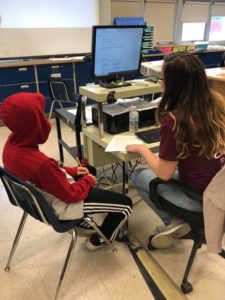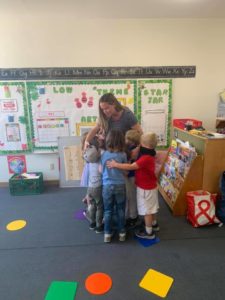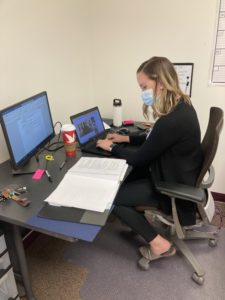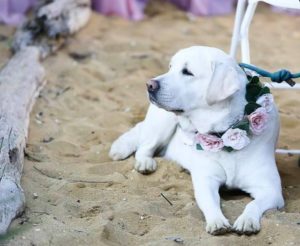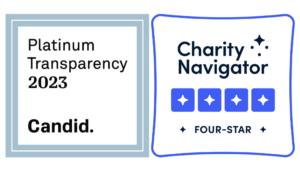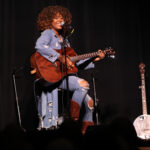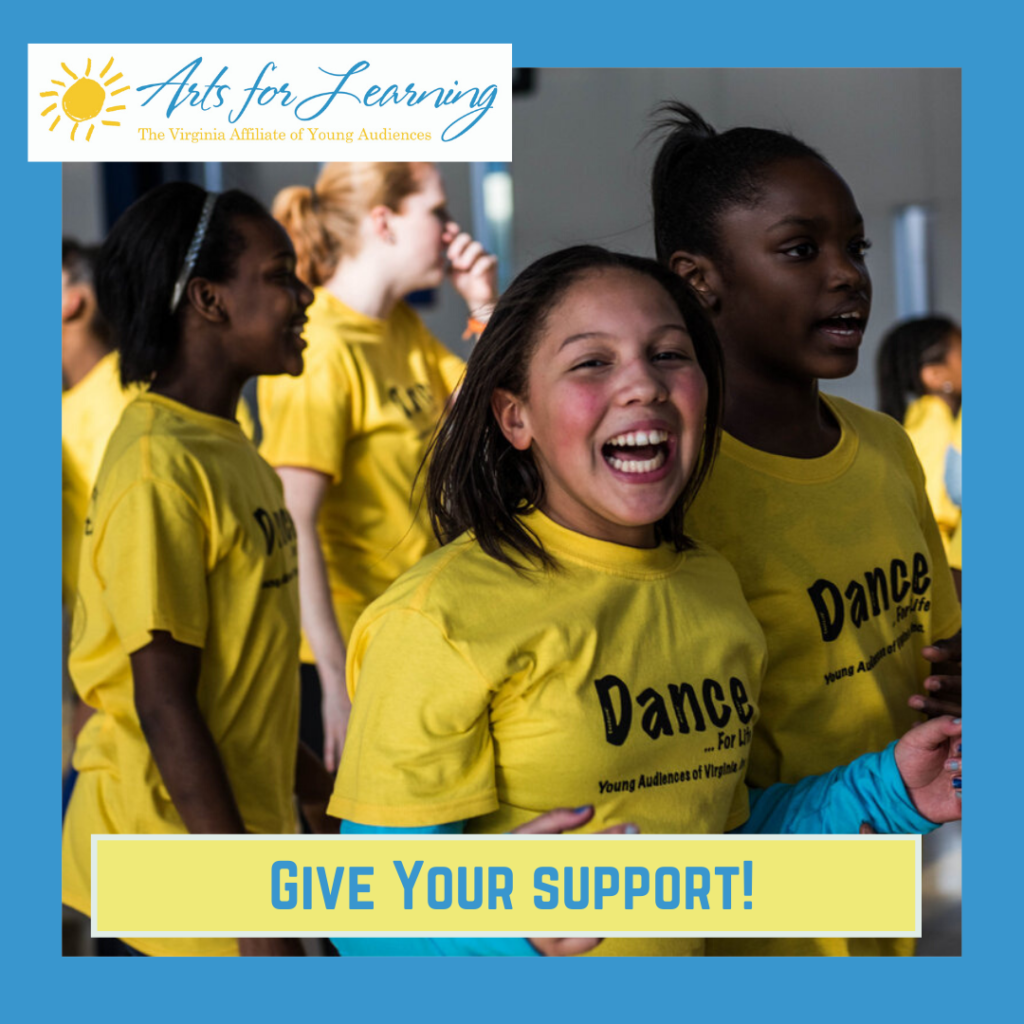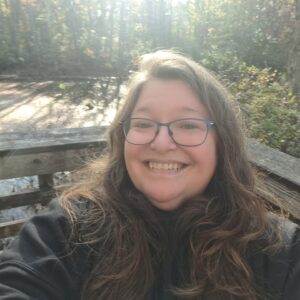 On January 4, 2004, Anna started work as Scheduling Director for Young Audiences of Virginia, booking hundreds of artistic performances a year. On this day, twenty years later, we learn why she remains more committed than ever to the philosophy and practice of producing exceptional arts education for Virginia’s children.
On January 4, 2004, Anna started work as Scheduling Director for Young Audiences of Virginia, booking hundreds of artistic performances a year. On this day, twenty years later, we learn why she remains more committed than ever to the philosophy and practice of producing exceptional arts education for Virginia’s children.
“The first thing that comes to mind is believing in the mission. Because that drives you every day, it gets you out of bed. I decided long ago that nonprofit was my place. You’re creating and you’re living an authentic life because that’s the reflection of art is life. And vice versa, life is art.”
Where It All Began
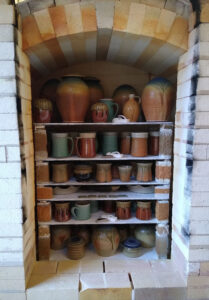 Anna’s parents are professional potters who opened their business when she was three years old. “When you’re raised in a family of artists, that’s pretty much your driving factor. I was always involved in the arts.”
Anna’s parents are professional potters who opened their business when she was three years old. “When you’re raised in a family of artists, that’s pretty much your driving factor. I was always involved in the arts.” 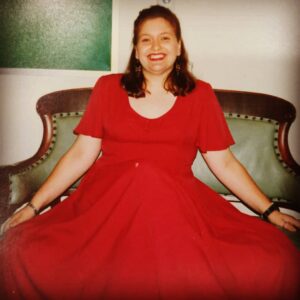
When she was 18, Anna was looking for a job after graduating from Maury High School where she’d been involved in the performing arts. “I walked from Ghent down to the Wells Theatre where my grandmother and I had been season ticket holders, and I walked into the box office and asked how I could apply to work there. I ended up interviewing that day with the box office manager, who hired me.
“And then I walked another day to the Generic Theater and Hurrah Players that were off of 21st Street at the time and asked if I could volunteer. So I was working at Virginia Stage Company at the Wells Theatre and volunteering for Bob Nelson at Generic Theater and that’s what started the process of my being in nonprofit arts.”
She briefly worked at a for-profit company, but quickly learned it wasn’t for her. “Working in an office every day for money and not creating art didn’t feel right.”
The Next Chapter
After nearly ten years learning different aspects of arts administration with Virginia Stage Company, Virginia Arts Festival, and smaller arts nonprofits, Anna was ready for a new challenge and accepted the job at Young Audiences.
“I spent the first part of my time at Young Audiences scheduling programs and reaching out to artists, introducing myself and establishing those relationships. It was nice to form such lifelong bonds with them, explaining to them that I had parents who were artists, and so I understood that this was their livelihood. And I think that they respected me more for knowing and understanding that, and then I worked really hard to get them bookings.”
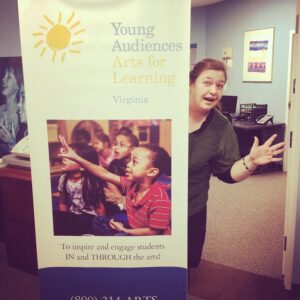
It was a couple of years into the job that the education portion of YAV’s mission resonated more deeply with Anna.
“In the beginning it was the artists and then it was the children. And then I had my own child, and it was the children and the artists and the teaching and how all that came together—I can respect the artists that do the work and want them to be paid their professional fees, I can see the children and how much it means to them and what a difference it makes in their lives, and then I can respect the educational components and how we teach further understanding of knowledge in and through the arts.”
Becoming COO
By jumping in and learning about all different aspects of YAV, Anna became an invaluable resource to the organization. In August 2016, the board of directors named her to the new position of Chief Operations Officer, a management role in which she influences every facet of the nonprofit. 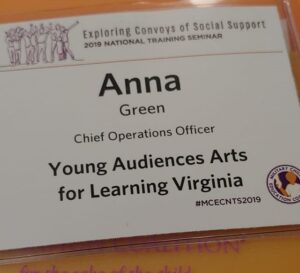
“There was an opportunity and a need for someone to step in who knew all aspects of the business. I had worked in finance. I had done development. I’d done bookings and marketing, I’d assisted the executive director, I’d written our volunteer handbook, I’d run residencies. When I became the COO, there was a real need for someone who understood and was familiar with the structure of the organization, who could keep things moving and running, so I stepped in and said I’m here to help.”
Her job keeps evolving. In August 2023, Anna assumed a new challenge as she took over the duties of a finance manager. It’s an area in which she’s always excelled, but it’s the first time she’s been responsible for the hands-on duties that the job entails. And that’s something she’s loved about her twenty years at Young Audiences/Arts for Learning: although some basics such as booking programming remain the same year after year, others change as the organization responds to changing needs with new services. That mixes it up for Anna who says she always has to “have things that keep me going in a job to keep it interesting.”
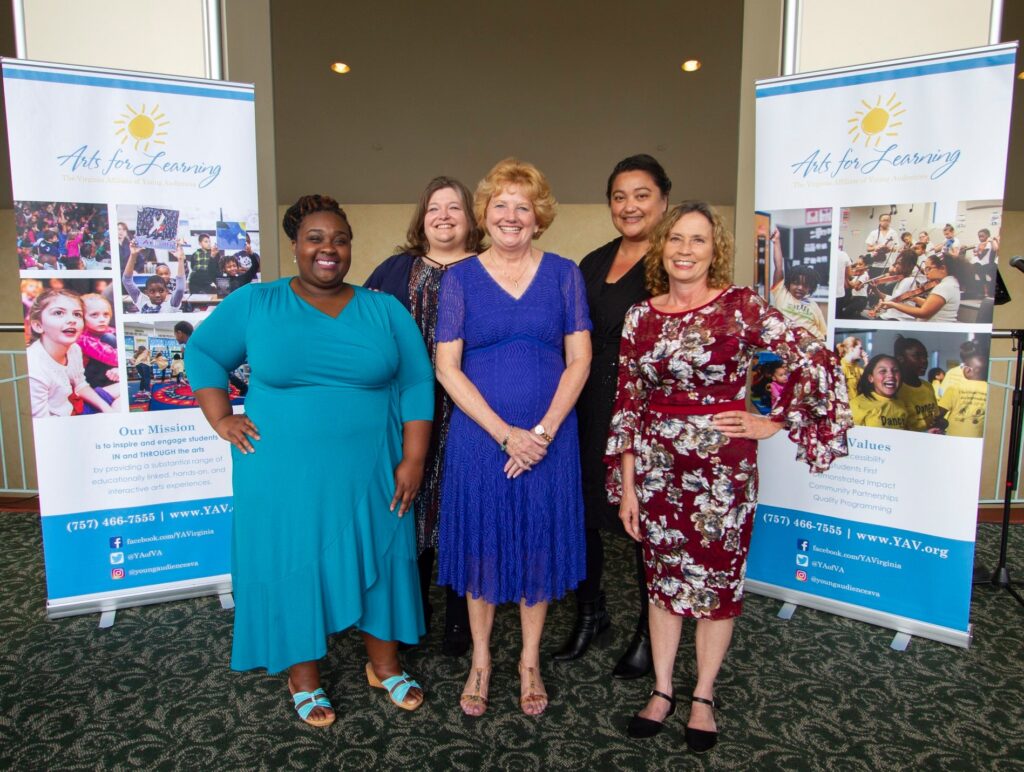
Greatest Accomplishments
In looking back on her time at the nonprofit, Anna is proudest of two very different accomplishments. First, she was instrumental in conducting an IT assessment that convinced the board to invest funds in updating the technology that’s needed to run an efficient, modern-day nonprofit. In March 2020, when COVID-19 shut down schools and hundreds of Arts for Learning programs were canceled, that technology made all the difference—employees were able to work from home with laptops connected through the A4L server. Within two weeks, our artists were producing short videos designed for students learning at home.
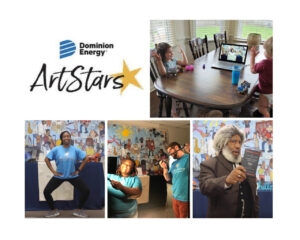 “Without the technology, we wouldn’t have been able to do that, let alone our jobs at all. It meant that we were able to do programming for the kids. It didn’t stop the work, and our downtime was only two weeks, and I’m really, really proud.”
“Without the technology, we wouldn’t have been able to do that, let alone our jobs at all. It meant that we were able to do programming for the kids. It didn’t stop the work, and our downtime was only two weeks, and I’m really, really proud.”
That digital programming, known as “Take 10,” won the 2020 Dominion ArtStars award for Eastern Virginia, recognized for its innovation, enterprise, and artistic quality.
But Anna is just as proud of another program that won the ArtStars Award, and it’s one that remains close to her heart. In her senior year of high school, Anna lived with her namesake grandmother, Anna Henderson, in Norfolk. Her grandmother had been a teacher at Maury High School and headed Norfolk Public Schools’ math department for a number of years. And although she thought Young Audiences did good work, she had told Anna she thought there was a bigger role for using the arts to teach math. In 2014, the two Annas collaborated on the first iteration of the Dance for Life program, working together on curriculum, session by session, along with teaching artists Cindy Aitken and Sheena Jeffers.
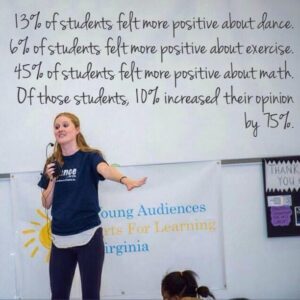
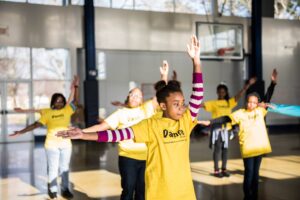
“My grandmother was in her recliner. She didn’t walk well, she was having trouble. I’d visit her every Sunday and I’d bring the curriculum I was working on. I wrote that with her.”
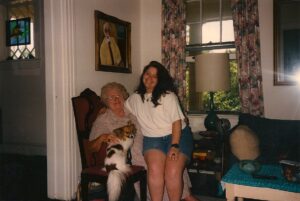
The elder Anna fell in October of 2014 and broke her hip. She passed away in January of 2015. The next year Dance for Life would go on to win the Dominion Energy ArtStars Award presented by the Virginia Commission for the Arts.
And to have the Dance for Life program go on and be as successful as it was and for it to win the ArtStars Award was very fulfilling. It was such an honor to do that with her.”
Goals in 2024 and Beyond
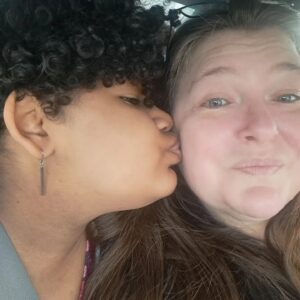
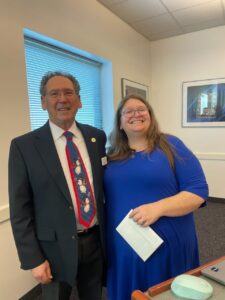
Today, January 4th, is a day to honor Anna’s twenty years and all she has brought to our organization. The celebration began at December’s board of directors’ meeting when president Dr. Michael Geller surprised Anna with recognition from the entire board. The occasion was made even more special by her 13-year-old teenager, Max, being on hand to witness it.
As for the coming year, Anna is looking forward to furthering the cohesion of the staff, building the roster of artists, developing programs, and being “proud of what we’re putting out.”
And although she’s celebrating a major milestone, it’s fair to say that her dedication to Arts for Learning’s mission hasn’t dimmed.
“That’s what I wake up with every day—how am I helping the organization achieve what it’s meant to do? Because the arts is the telescope, it’s the magnifier, for learning to happen, and that’s what we’re here for. We’re providing something different and unique that students aren’t seeing in the regular classroom.”
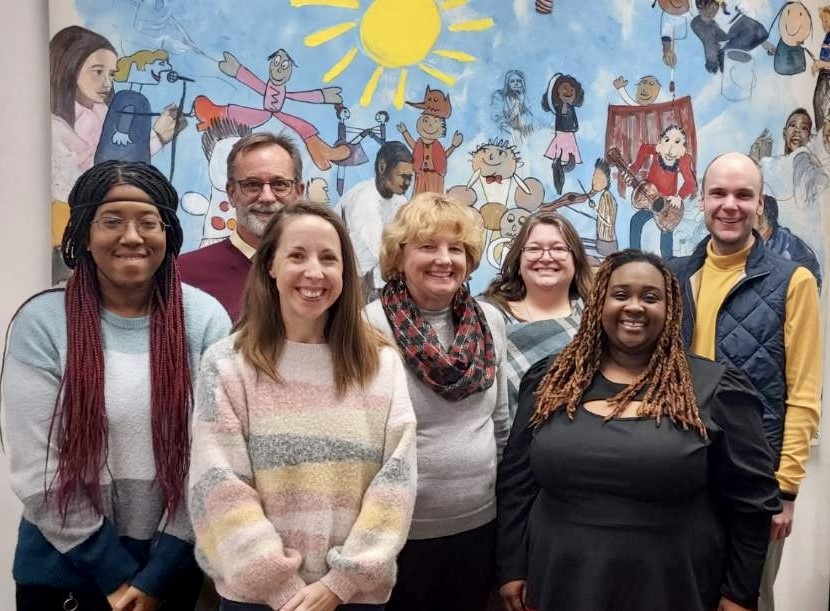
On behalf of the staff and board of Arts for Learning, we wish Anna a very happy 20th “workiversary.” We’re grateful for all her contributions to the students we serve, and our artist, educator, and community partners.


